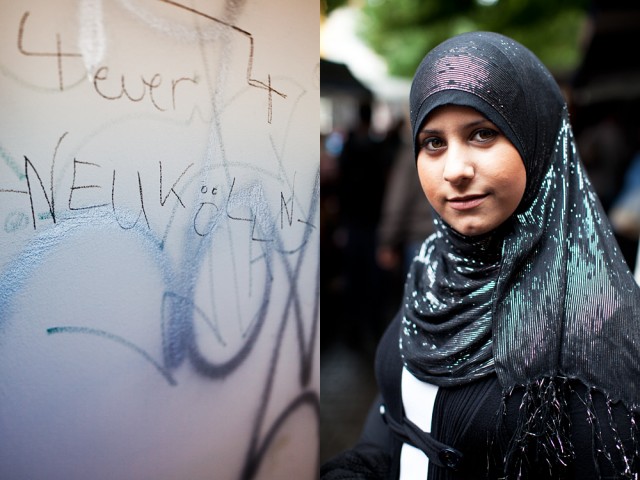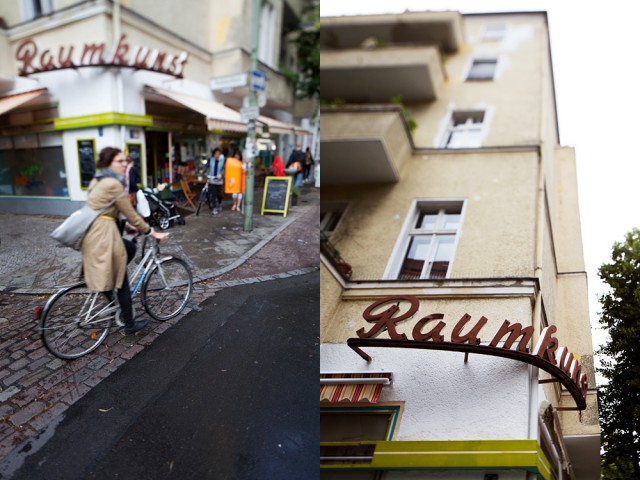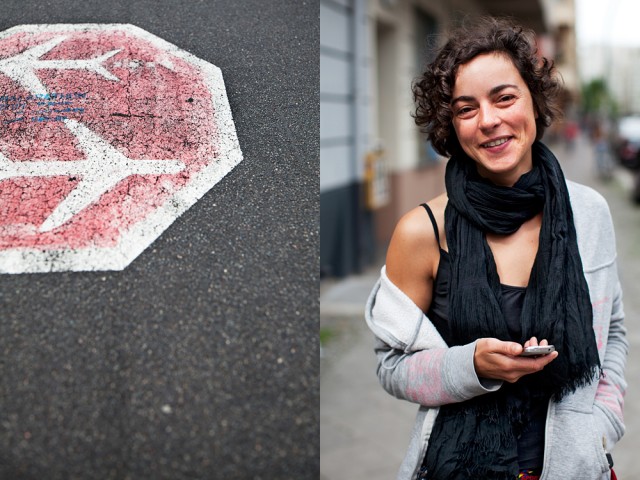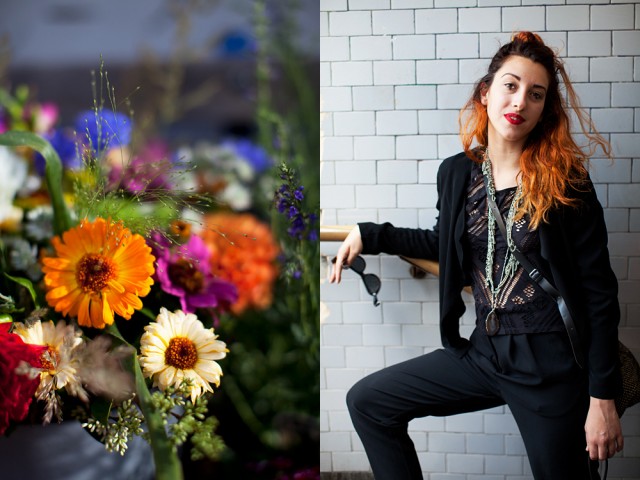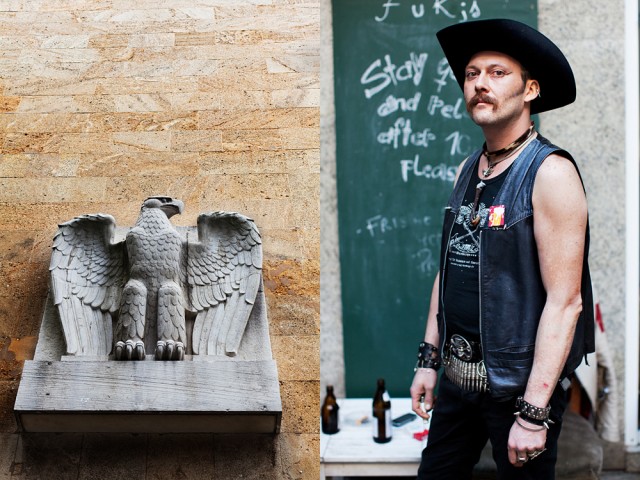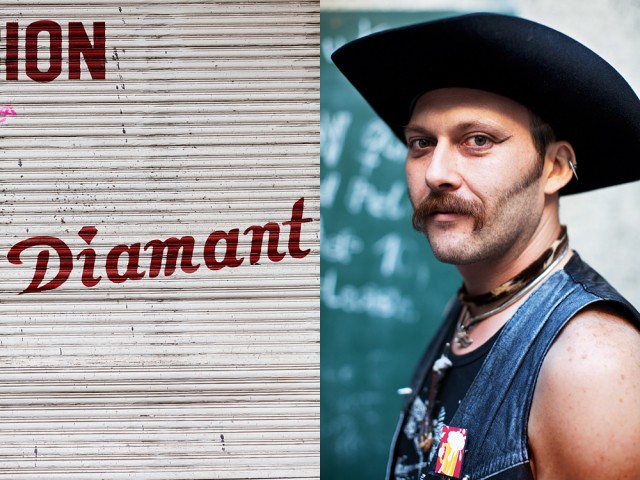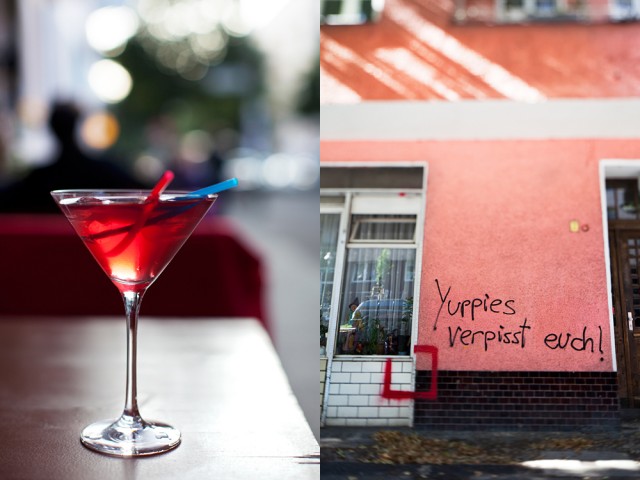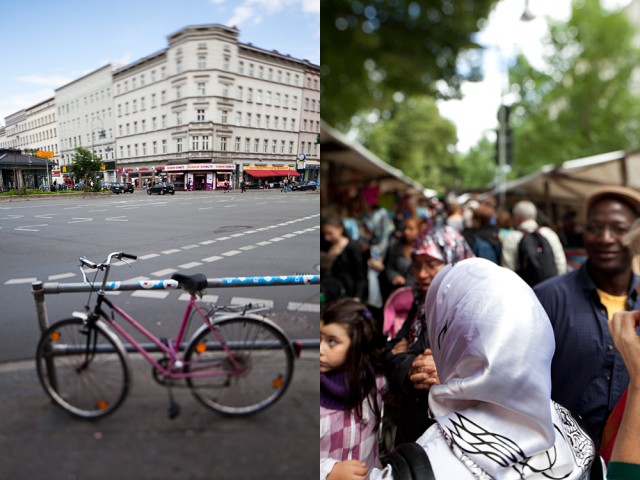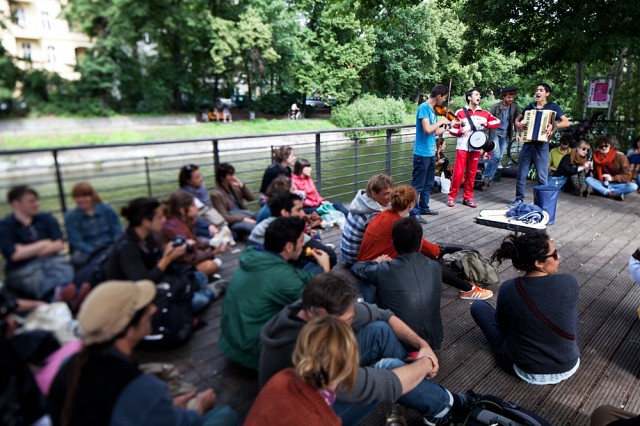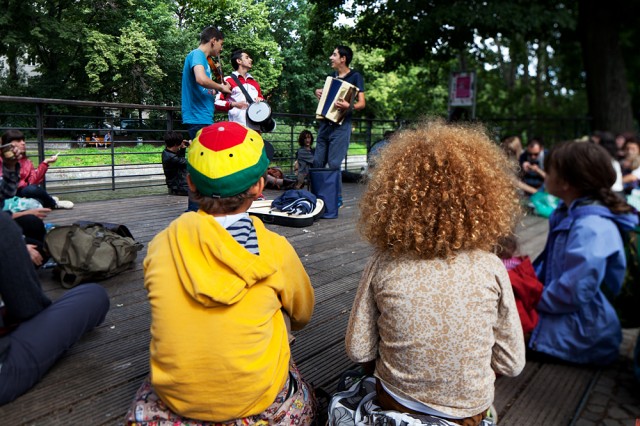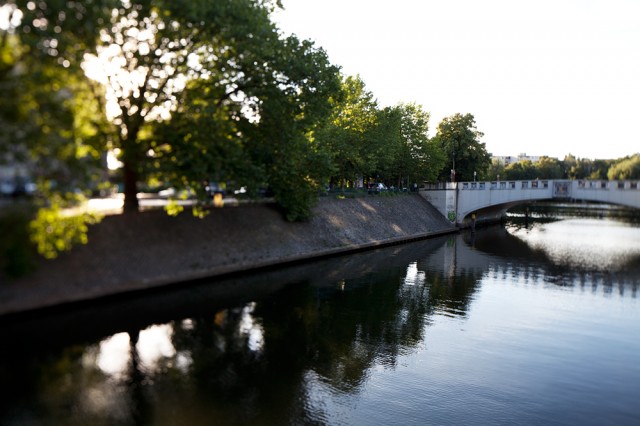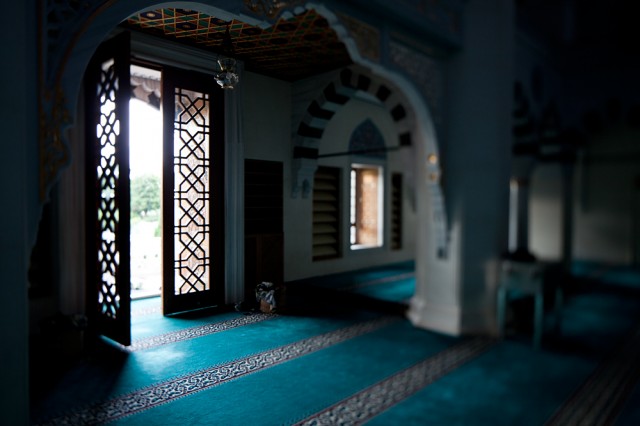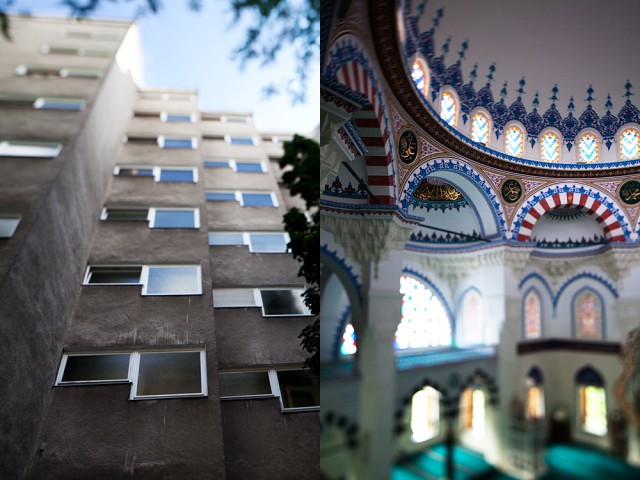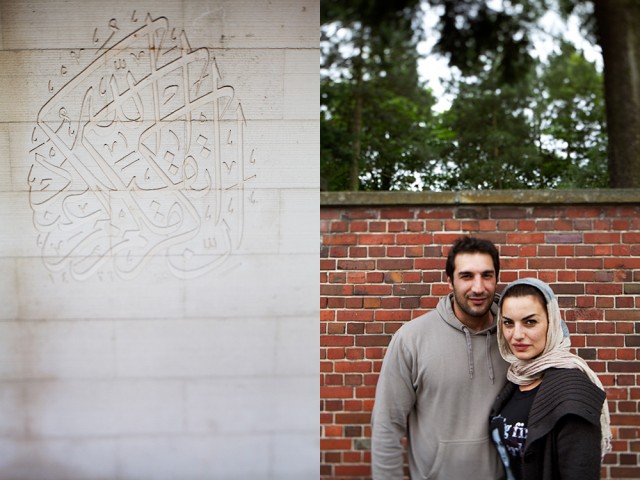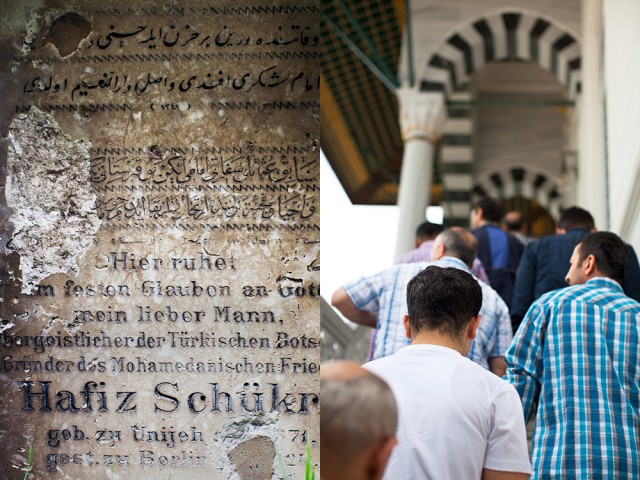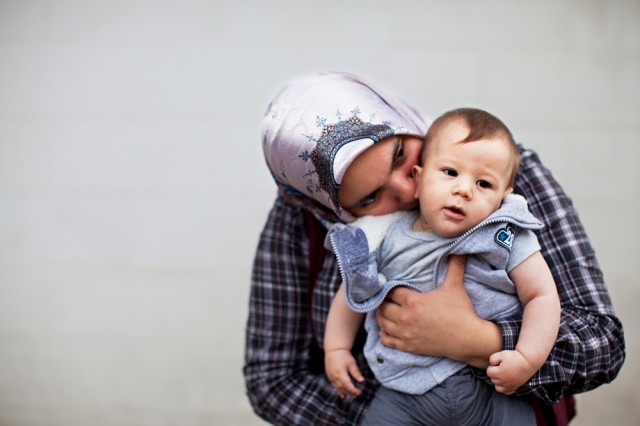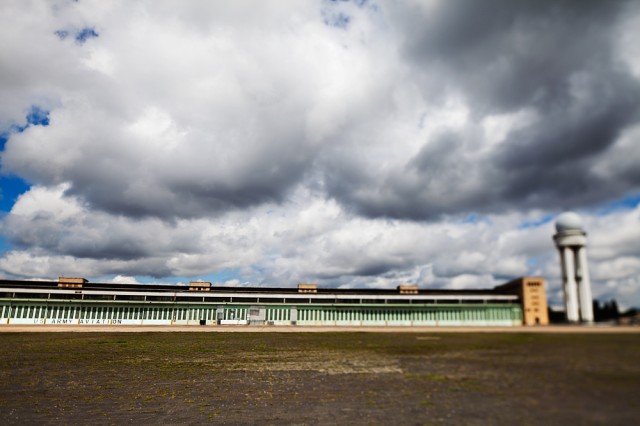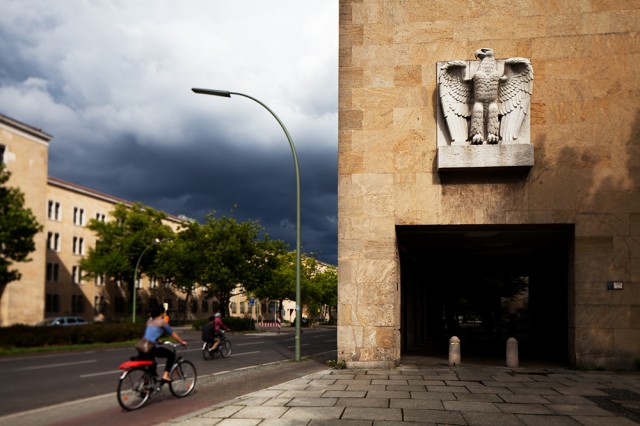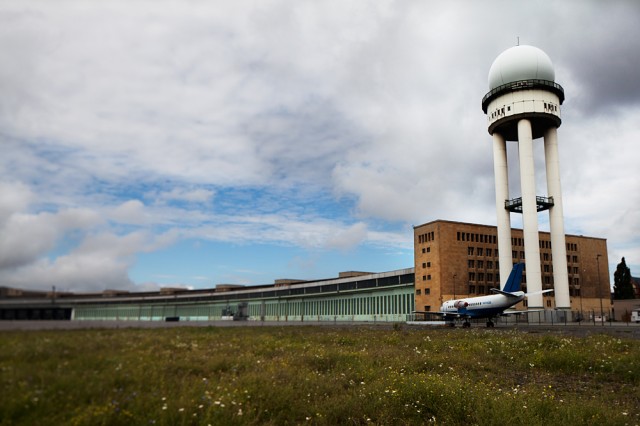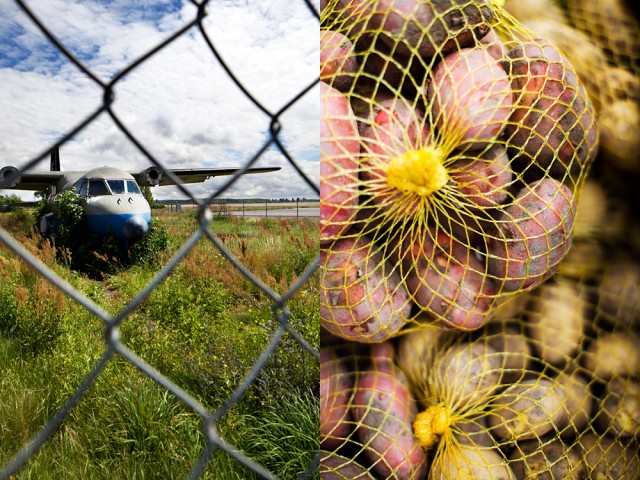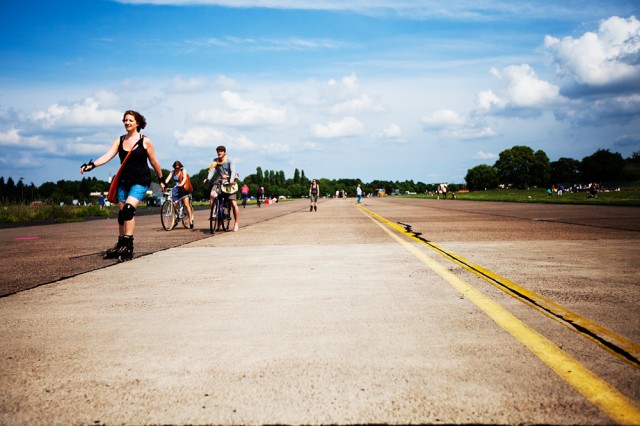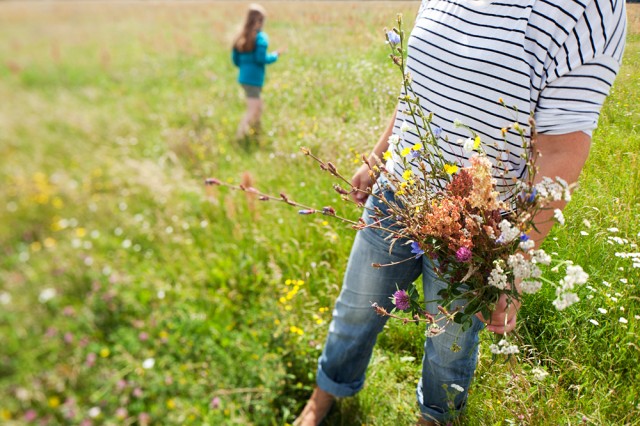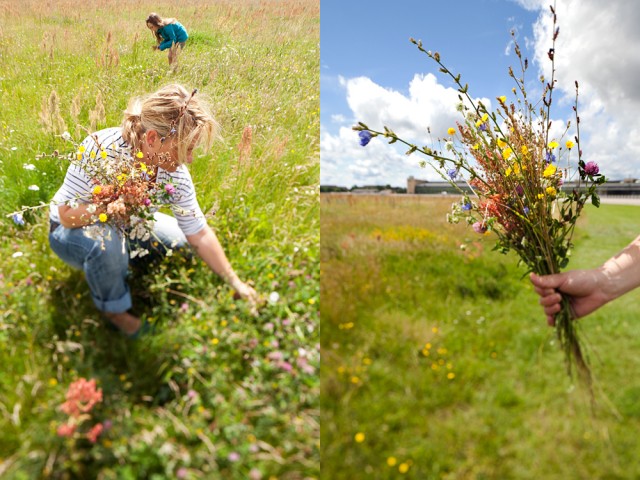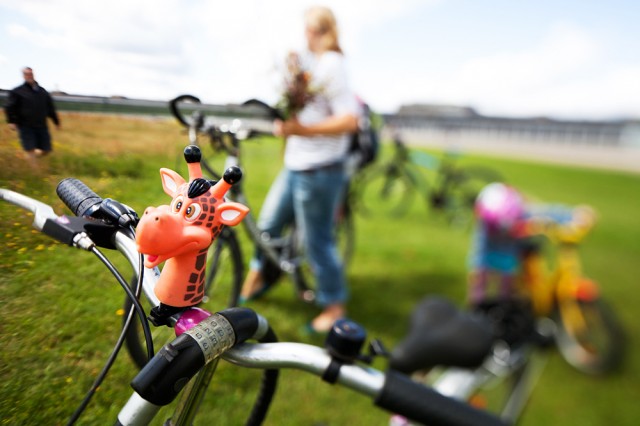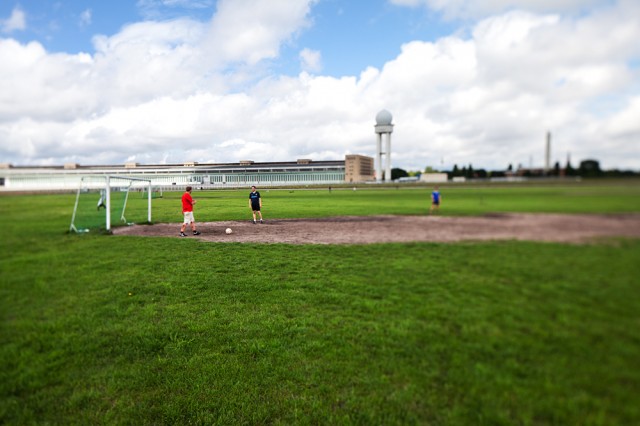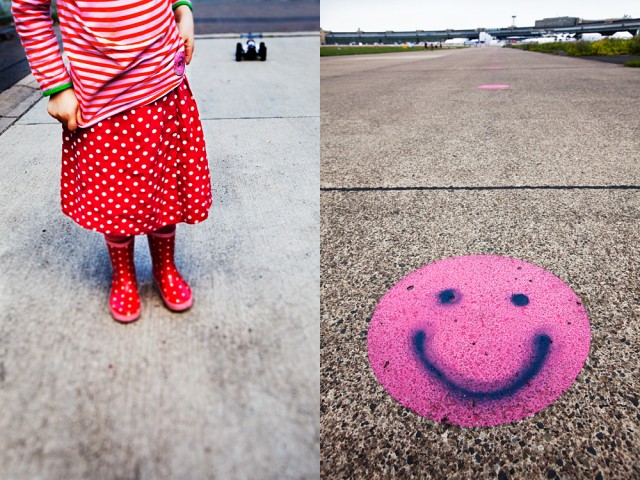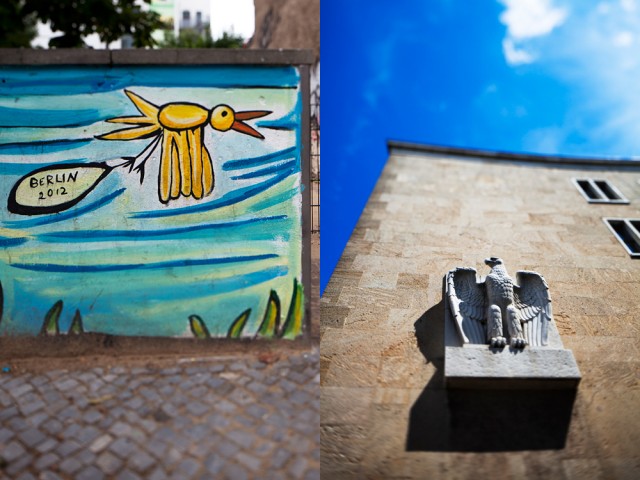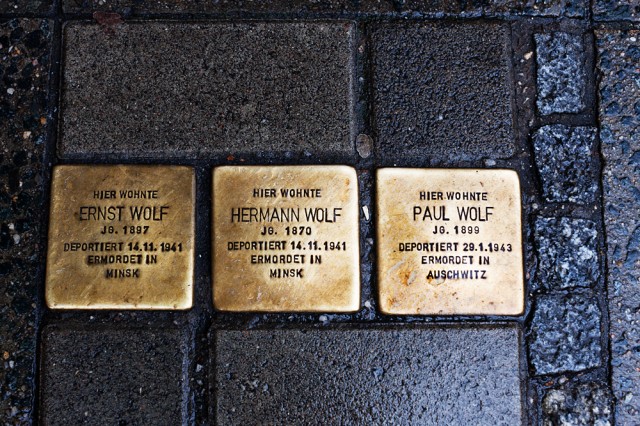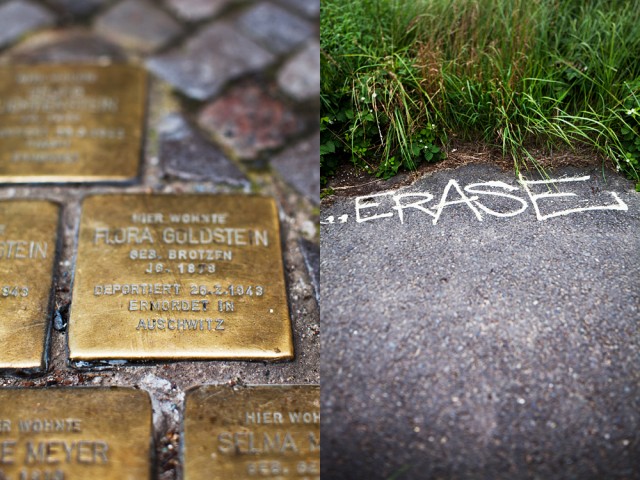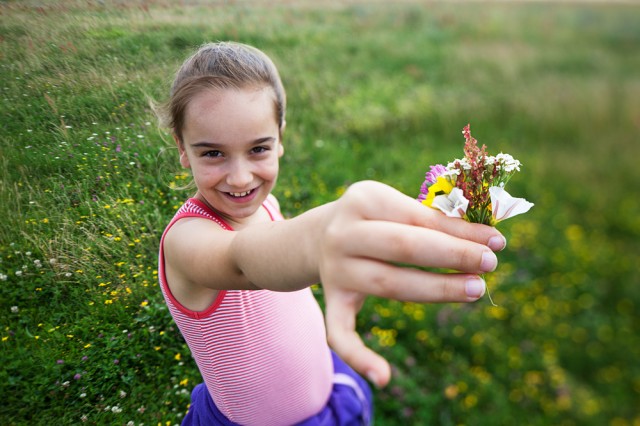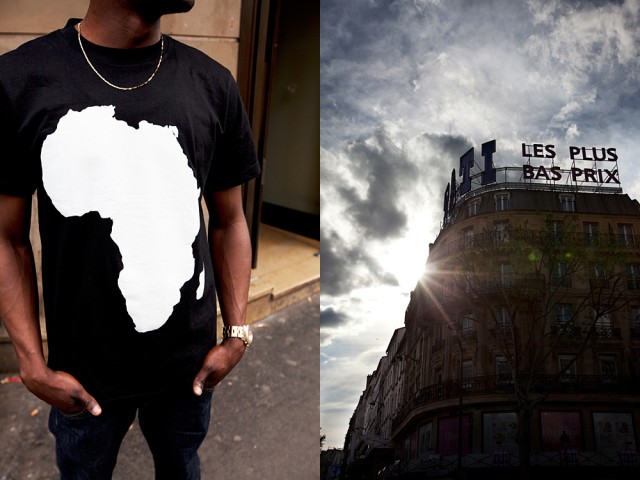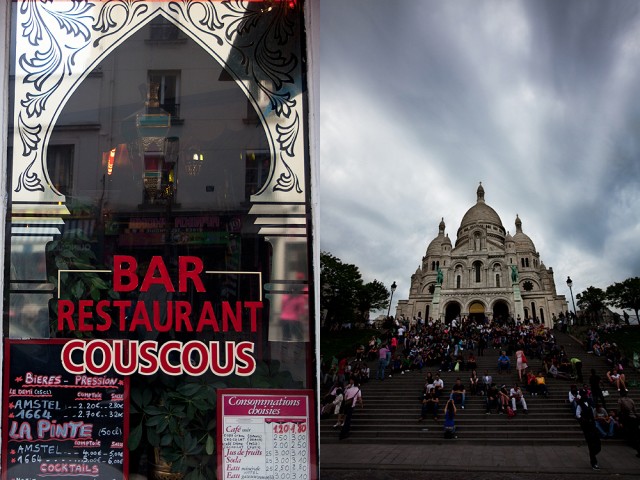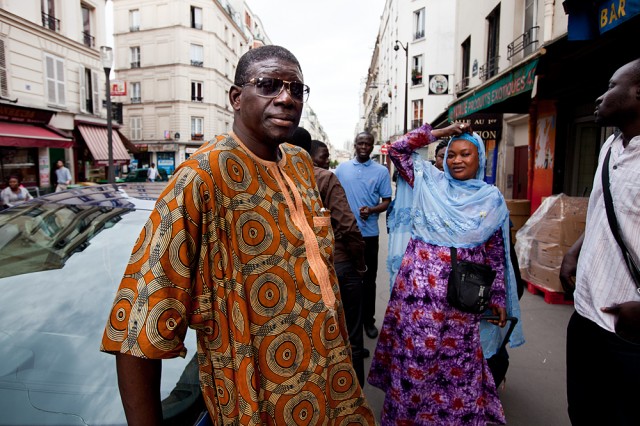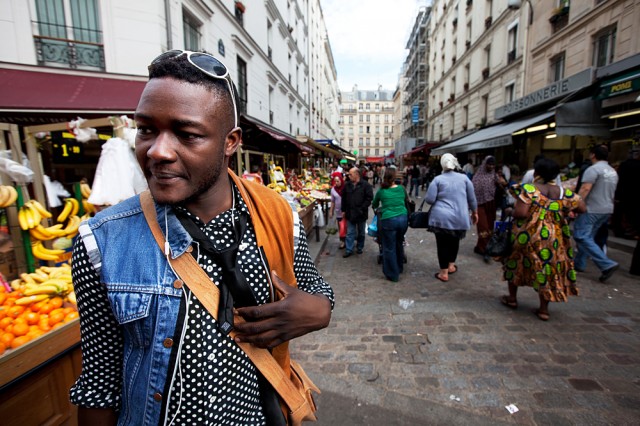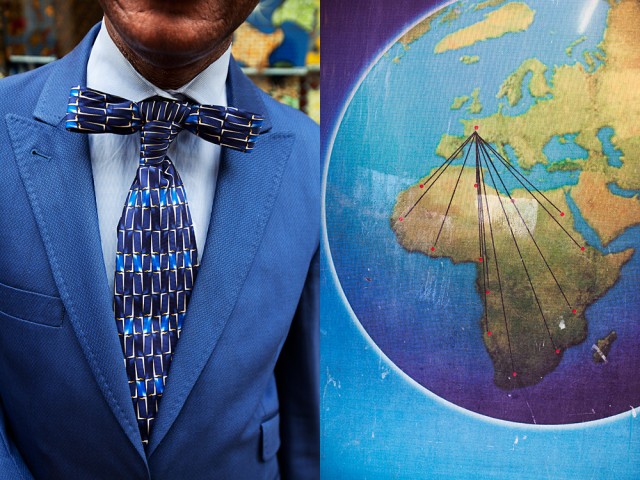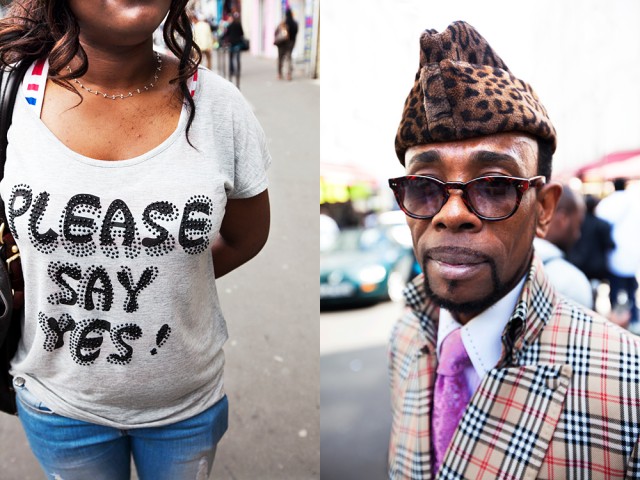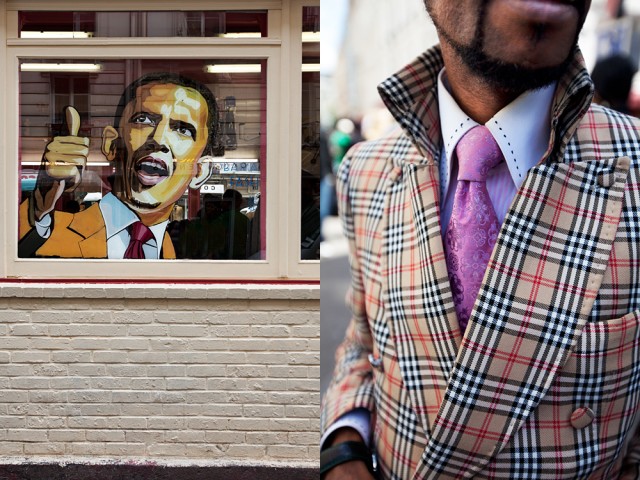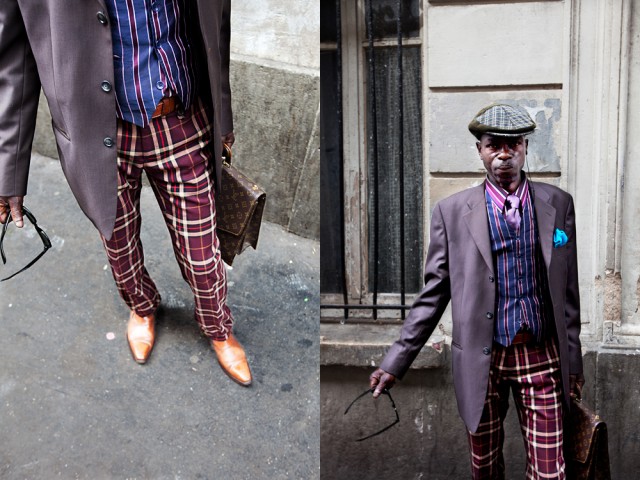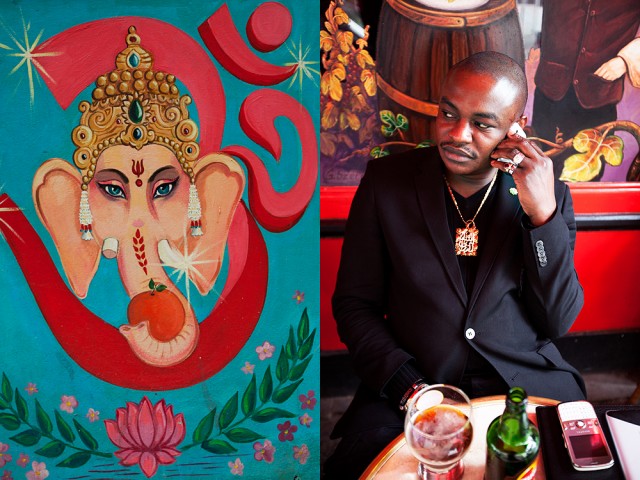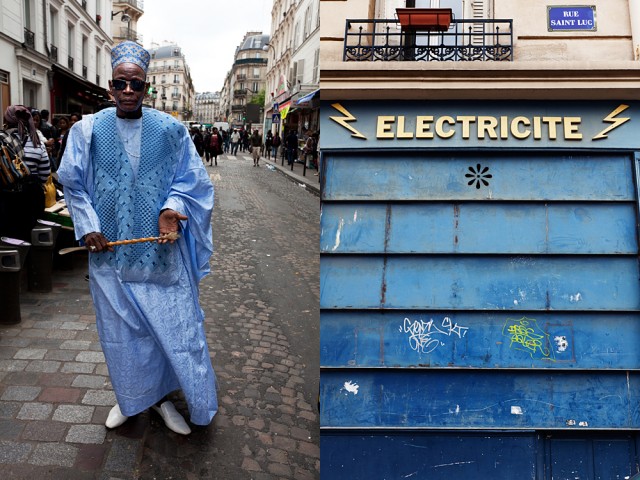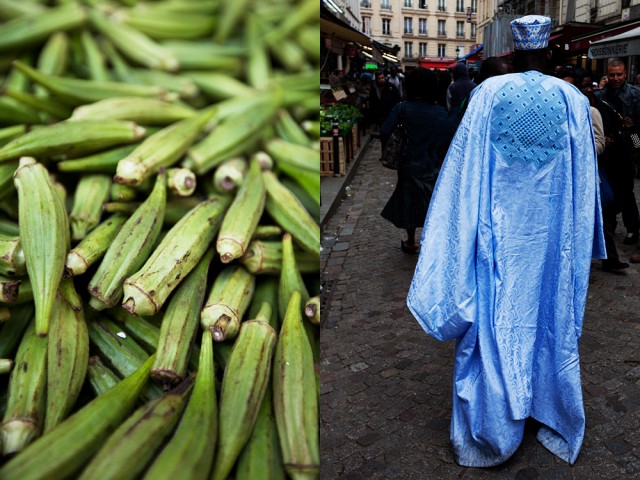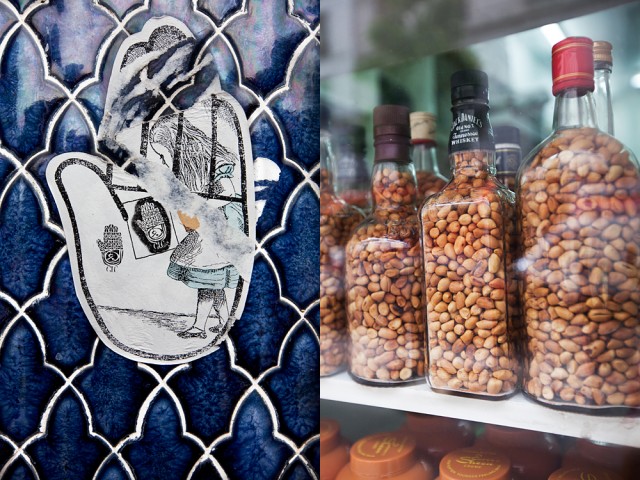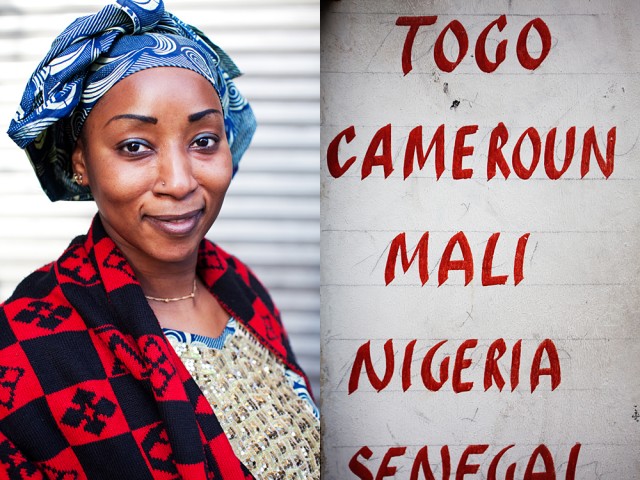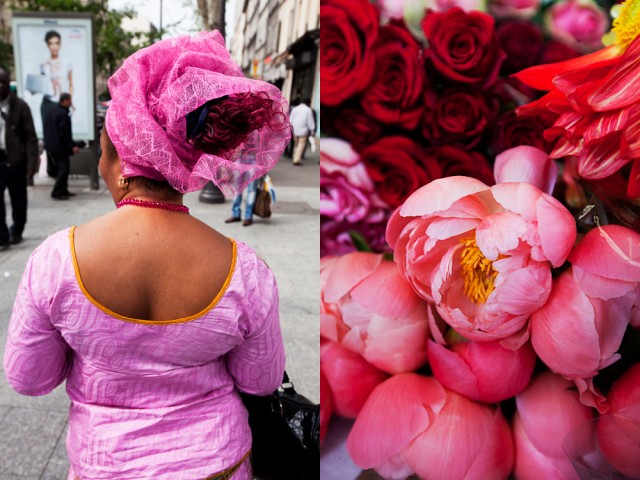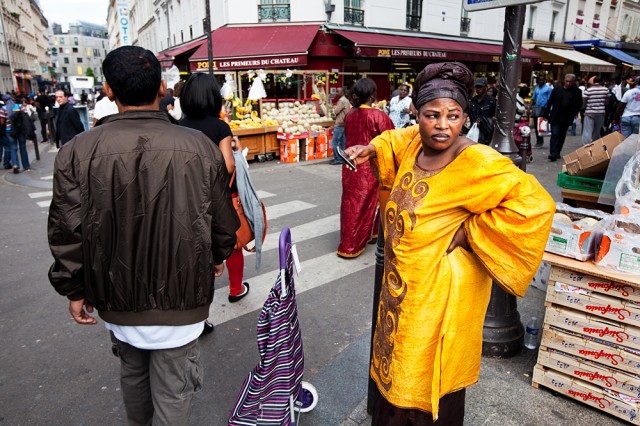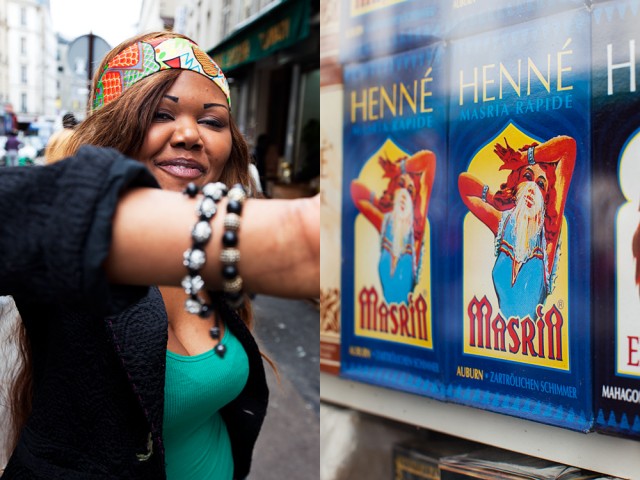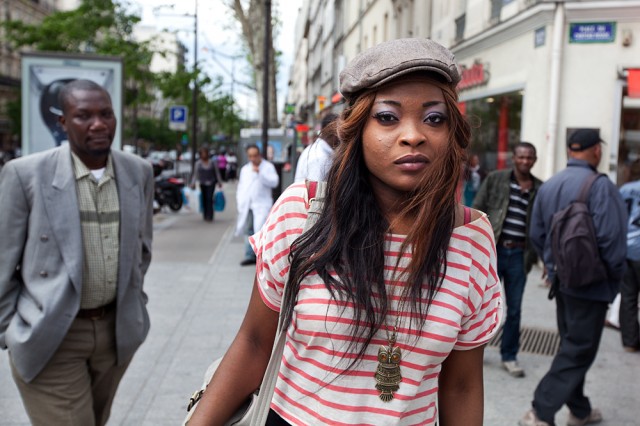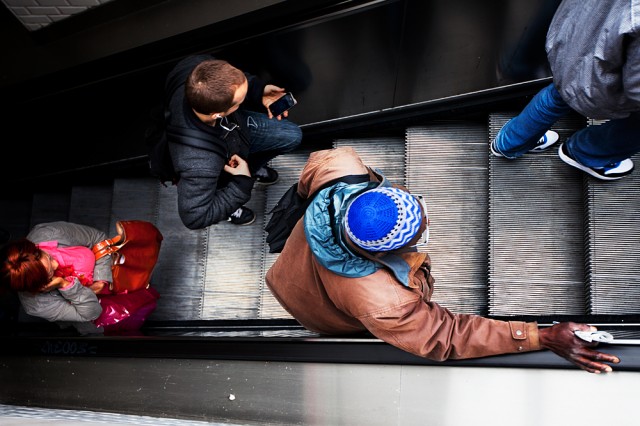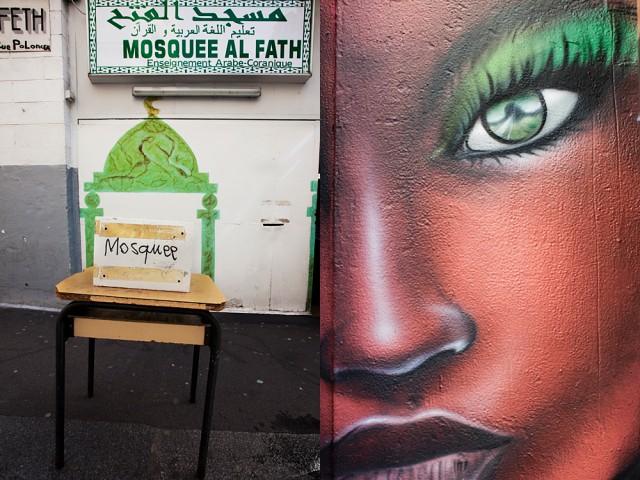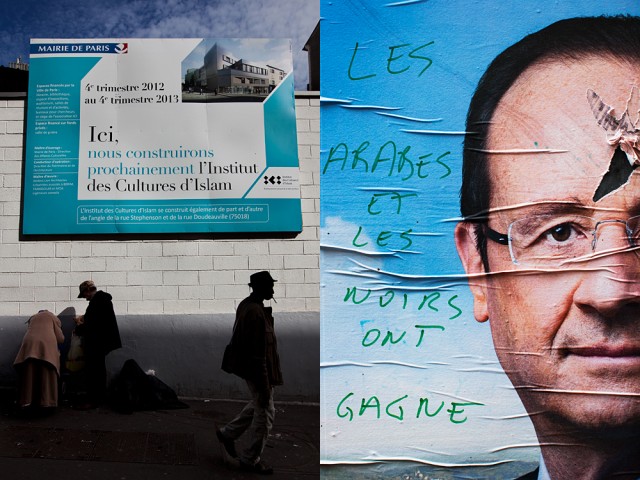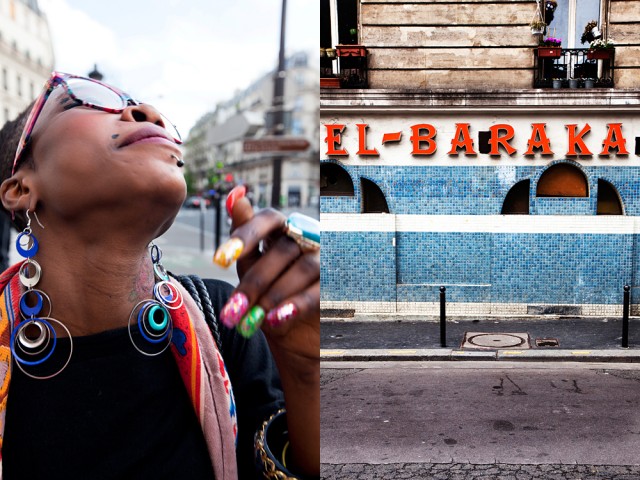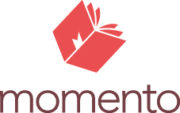Apologies for the late post – without warning, winter returned to Berlin last week, and with it, bucket loads of rain.
In between the thundery downpours we managed to get out long enough to have a nose around various bits of Neukölln, a borough just south of last week’s Friedrichshain.
I say ‘bits’ because unlike Friedrichshain, Neukölln is enormous. So I chose two neighbourhoods to focus on – the northernmost tip, also called Neukölln (and where our apartment happens to be), and one in the south, Gropiusstadt.
As I quickly discovered they are very different worlds and too much for one post. So I’ve split them into two, starting in the north with this post and then heading south with a post in a few days time (two in one week? can you cope?)
Same facts about the borough in general. Located in the former west, but only just – it has one of the longest sections of border with the former East Berlin. Name comes from Berlin’s former twin settlement of Cölln. Almost half the population are from immigrant backgrounds, mainly Turkish, Arab and Kurdish. One of the poorest boroughs, with unemployment, drug and ‘social issues’. Popular with students, artists and travellers.
Okay, starting with North Neukölln, let’s wander.
Part 1: Different stories
Admittedly I’ve only been in Berlin for five minutes but as far as I understand it, North Neukölln has come into its own in the last few years primarily because neighbouring Kreuzberg – where the apartment blocks are just that much nicer – got too expensive.
Various peoples, from Turkish immigrants to artists, students and travellers, couldn’t afford Kreuzberg anymore so they moved south to Neukölln. And now North Neukölln is just like Kreuzberg (hence its nickname, Kreuzkölln) but cooler.
Well, that’s what some people told me. Others said it was too rough and druggy.
In fact, in the last week I’ve heard all sorts of things about North Neukölln; it’s such a mix of cultures and characters that depending who you speak to, you get a different story. It’s cool, not cool. A wonderful melting pot, a failed melting pot. It’s thriving because of travellers. It’s being ruined by travellers.
At the end of it all the only thing I knew for certain? The olives are much cheaper at the Turkish Market than in the shops.
I can’t comment on the night life in North Neukölln – I’m such an old fart – but apparently it’s where ‘real’ Berliners head after dark. While the international techno crowd make merry in the massive clubs across the river in Friedrichshain, locals party here in former brothels and smaller bars.
As in other poorer Berlin neighbourhoods that are rapidly changing, the anti-gentrification movement is in full swing here. I read one flyer from ‘AntiGen Neukölln’ warning “students, artists and travelers” about evil landlords and real estate investors pushing up rental prices – “As these prices are still cheap compared to the rental prices in their hometowns.. everything seems to be fine, but, not for all… Slowly but surely, the poorest and most vulnerable people are forced to leave behind the life that they have built… their friendships, their places, their communities, their memories…Whatever you do, don’t pay too much rent!”
So what exactly are rents like here? Someone I know pays $150 per week for a 55m2 one bedroom apartment – and that includes heating. Seems incredibly cheap to me but then I come from crazy-prices-Sydney.
Part 2: The Turkish market
The Turks were invited in after WWII as ‘temporary workers’ – and never left.
Apparently Berlin today has the second largest Turkish population after Istanbul. Whether that’s accurate or not I don’t know. But it’s definitely true that there’s a huge Turkish population here – many of whom call Kreuzberg and North Neukölln home.
While the whole immigration issue is highly controversial, I didn’t meet anyone who had a problem with the Turkish market that happens every Tuesday and Friday down by the canal.
Fresh food, free entertainment and, like I said, cheap olives.
And definitely the place to come if you like a crowd – most of the time Berlin feels so empty to me, but at the Turkish market it’s wall to wall.
By now Duaa, below, will be a married woman. But when we met her she had five days to go. Her eyes lit up when she talked about the impending nuptials. Born in Lebanon, she moved to Berlin when she was just five months old.
We met Hoda walking along with her boyfriend. She was born here but comes from a Palestinian background. I asked her how she felt about Berlin. “Too crowded”. Then she thought again. “But when I like people, I love it.”
After you’ve filled your bag with fresh bread, cheese, fruit and veg – and cheap olives – there’s free entertainment.
Part 3: The Turkish Mosque
Given how large the Turkish and Arab population is in Berlin, and the fact there are about 300,000 Muslims in the city, I imagined I’d see quite a few mosques around the place. But it turns out that although there are about 80 mosques and/or prayer rooms, most of them are hidden away in apartment blocks.
There are, however, two ‘proper’ mosques – the largest of which happens to be in Neukölln.
Şehitlik Moschee is fairly new – finished in 2005 – but it’s designed in the ancient Ottoman style and was built alongside a Turkish cemetery dating from 1863.
While it’s kind of out of the way, on a major road with lots of green around, I still got quite a shock to see this little piece of Istanbul with its shining white minarets piercing the sky in grungy-gritty-graffitied Neukölln.
The first time we visited the mosque we just had a quick look around and left. As we were leaving we met husband and wife, Yunus and Sukrau. They explained they both had Turkish parents but had been born in Berlin. I asked them a question they must get all the time but were gracious enough to answer: did they feel German or Turkish? Yunus replied, “In my heart I am Turkish, but in my head, German.”
The next time we visited happened to be on the first day of Ramadan (my lack of research never ceases to amaze me). Coco seemed quite concerned – no food or drink during the day for an entire month? – until she found out kids didn’t have to participate until they became teens.
We met 30 year old Pinar and her five month old son, Baturkagan, standing in the courtyard just before prayer. She and her husband are heavily involved in the running of the mosque, particularly on the education side of things. Like Yunus and Sukrau, Pinar was born in Berlin – but just from the way she was dressed you could tell she felt more Turkish than German. She explained that her parents had always encouraged integration but that she loved the Turkish culture; she and her husband visit Istanbul once a year and dream of living there.
I asked Pinar about the whole multicultural-Muslim question. In her opinion Muslim people are neither accepted nor understood by the majority of German people who still ask the same questions about terrorism at the mosque’s information days.
Pinar talked about being a minority – yet at some schools in Neukölln, it’s the ethnic German kids who are in the minority. Neukölln is still living down an incident in 2006 where teachers at a local school with a hugely migrant student population spat the dummy, demanding the school be shut down due to the out of control violence.
I left the mosque that day with Angela Merkel’s words from 2010 ringing in my ears – “The approach to build a multicultural society and to live side by side and to enjoy each other…has failed, utterly failed.”
Part 4: Airport turned park
Most – okay, nearly all – of Tempelhofer Park isn’t in the borough of Neukölln. But it’s a stone’s throw from Şehitlik Mosque and when I studied my map, I noticed that a very slim slice of the park, the easternmost bit, also appears to be inside the boundary line.
Good enough for me. I love this park so much I’d use any excuse to include it.
So Tempelhofer Park was once an airport – Flughafen Berlin-Tempelhof. Designed and built by the Nazis in the 1930s, British architect Sir Norman Foster called it “the mother of all airports”.
The semi-oval building is huge, Europe’s largest stand-alone structure. But just as impressive is its history; when the Soviets tried to starve West Berlin in 1948-1949, the airport saved the city by enabling planes to deliver supplies.
The Berlin Airlift endeared the airport to every Berliner – so much so, when there was talk of closing it down in 2008, there was a huge outcry. It failed to keep the airport open but thankfully the city didn’t redevelop the site or mothball it. Instead in 2010 it opened the entire area to the public, aside from the buildings, and said, go play. Cycle, rollerblade, run. Play soccer, fly a kite, whatever, it’s yours.
Looming on the horizon, however, like a small dot of a plane that will inevitably reveal itself, is a question mark over the park’s future. They say it’s going to be turned into an ‘urban park landscape’. But what’s so cool about it now is it’s an old airport with real runways that you can roam around on. Why mess with that?
Part 5: Watch out where you walk
Stolpersteine are all over Berlin but I saw my first ones in North Neukölln. I’d heard about these mini monuments which commemorate Holocaust victims but because they’re small and on the ground, they’re not easy to spot. Translated as ‘stumbling blocks’, the small brass blocks record the name of an individual, the date they were deported and the name of the concentration camp they were ermordet – murdered. They’re positioned outside the last known home of the individual, laid flush with the pavement.
I found them incredibly moving in the way they quietly announce the terrifying fate of an individual.
The Wrap
I read somewhere that Neukölln was once called the “Bronx” of Berlin, and still today you can read all sorts of scary statistics about the place – it’s the poorest, the most crime ridden, the place immigrants like the Romanians are flocking to in order to take advantage of Germany’s social welfare, etc etc.
Yet in the three weeks we’ve been living here, in an apartment in North Neukölln’s Hermannplatz, I’ve grown to like it more and more – precisely because of the mix of people. But the kids who live across the road are on the streets until midnight. And the men who hang on the corner, in the half shadows, what’s their story?
Still, the olives are cheap.
On the ‘home front’
Coco may be all smiles in the image above but there have been tears too this week. Another traumatic episode of home schooling where I just couldn’t get her to understand a fairly simple maths concept. She ended up sobbing on the bed as I went into some kind of shock, petrified that a part of her brain had stopped developing due to the lack of regular schooling.
In my downward spiral I questioned whether or not I should pull the pin on this project. Am I ruining my daughter? was all I could think. I am just so sick of worrying about her – not only the lack of a maths brain – but the fact she’s a single child with a single mum, playing on her own as I spend endless hours on the computer, processing images and working up these posts. And yes, travelling around the world should be an amazing experience but when people ask her if she’s enjoying it, she usually replies, yeah, but I don’t like the tagging along with mum ‘blogging bit’.
It doesn’t help that Berlin is an exhausting city to explore – fascinating but exhausting – and comes after six months of constant travel and work. We are both tired, the sort of tired that can’t be helped by a good night’s sleep; I’ve caught myself fantasising about the project ending so I can sit still for a week, a month.
And I’m suddenly homesick, really homesick. I’ve never felt more Australian in my life, never loved my country more.
But I can deal with me; this project is relentless and exhausting but ultimately incredibly satisfying and rewarding. It’s when my daughter starts showing signs of wear and tear that I start to wobble.
And then. Just as I was thinking through the repercussions of calling it a day. She utters these words: “I really like blogging now”. And then, “I realise how lucky I am.”
In the nick of time, Coco. In the nick of time.
—
This suburb has been brought to you by Alison Reeve
—
I’ll post the second Neukölln installment in a few days time. And then it’ll be back to regular programming – I hope.
